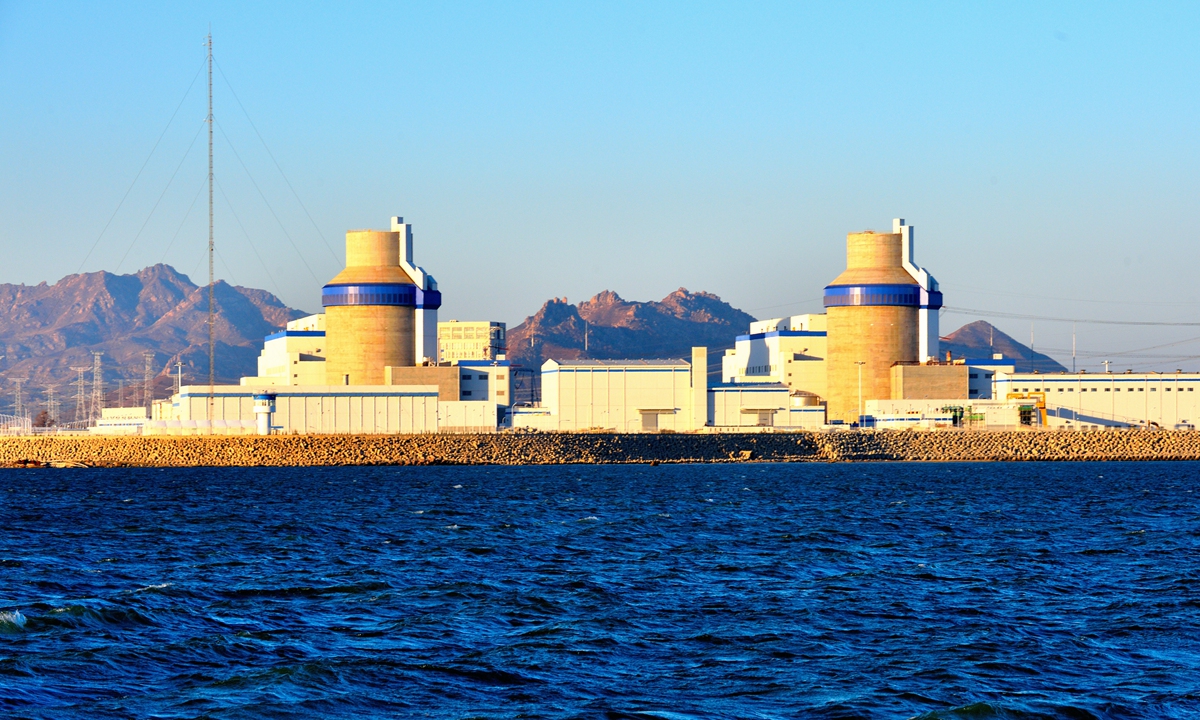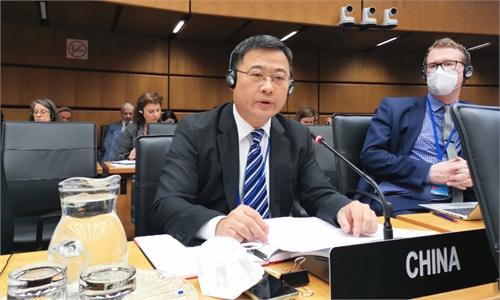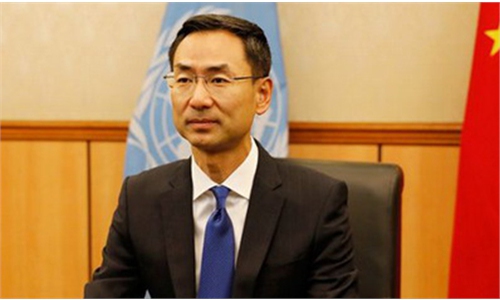IN-DEPTH / IN-DEPTH
China’s nuclear industry progresses steadily and safely under CPC leadership, safeguarding energy security, green development

The Haiyang Nuclear Power Plant in East China's Shandong Province. Photo: Courtesy of Shandong Nuclear Power Company
In the past decade, China's nuclear energy industry under the leadership of the Community Party of China (CPC) has achieved and developed greatly.In November, 2021, Haiyang city in East China's Shandong Province bid farewell to its coal-burning days with the launch of its nuclear heating project, becoming the first Chinese city to have zero-carbon-emission winter heating.
This is the epitome of China's nuclear power development achievements in recent years and its development orientation for the future.
The nuclear heating project is run by the Shandong Nuclear Power Company under the State Power Investment Corporation Limited (SPIC).
As of the end of October, the total installed capacity of the SPIC has exceeded 200 million kilowatts, of which the installed capacity of clean energy had exceeded 128 million kilowatts, or 62.56 percent of the total, a front runner globally.
The two nuclear power units in Haiyang have provided a total of more than 81 billion kilowatt-hours of clean electricity since 2019, which is equivalent to saving more than 33 million tons of raw coal consumption, reducing carbon dioxide emissions by about 61.8 million tons, sulfur dioxide emissions by about 200,000 tons.
The success of the project has provided a new model for the development of the nuclear energy industry, proving that nuclear energy is not limited to generating electricity, but has more power development and utilization potential.
It is necessary to accelerate the development of new energy sources such as wind, solar, biomass, and hydrogen energy that have scale and benefits, coordinate hydropower development and ecological protection, and actively develop nuclear power in a safe and orderly manner, Chinese President Xi Jinping, also general secretary of the CPC Central Committee and chairman of the Central Military Commission, reaffirmed this in January 2022 while visiting North China's Shanxi Province.
As of October, there were 53 commercial nuclear power units running in China, with a total installed capacity of 55.5947 million kilowatts, ranking third in the world in terms of both the number of units and installed capacity; there are currently 23 nuclear power units under construction, with a total installed capacity of about 25.39 million kilowatts.
China has formed third-generation nuclear power technologies such as the "Guohe No.1" and the "Hualong No.1" with independent intellectual property rights.
"Guohe No.1," for instance, is the latest achievement in China's nuclear power technology research and development and industrial innovation. It has produced more than 7,611 intellectual properties, and the localization rate of equipment exceeds 90 percent, forming a relatively independent industrial chain. It can meet the electricity demand of more than 22 million residents annually and reduce carbon dioxide and other greenhouse gas emissions by more than 9 million tons annually.
China has accelerated the implementation of its "dual carbon" goal, which is to peak carbon dioxide emissions before 2030 and achieve carbon neutrality before 2060, in an all-rounded way, including establishing a national agency to coordinate the top-level design of carbon peaking and carbon neutrality and issuing guidelines on how to achieve these goal, the Xinhua News Agency reported.
The decision-making and deployment process fully demonstrate China's determination and confidence in unswervingly following the road of green and low-carbon development, actively responding to climate change.
Nuclear energy is expected to play a greater role in promoting green and low-carbon development, and contribute more to China's realization of its carbon peak and carbon neutrality.
The author is the general engineer for nuclear development at the SPIC



